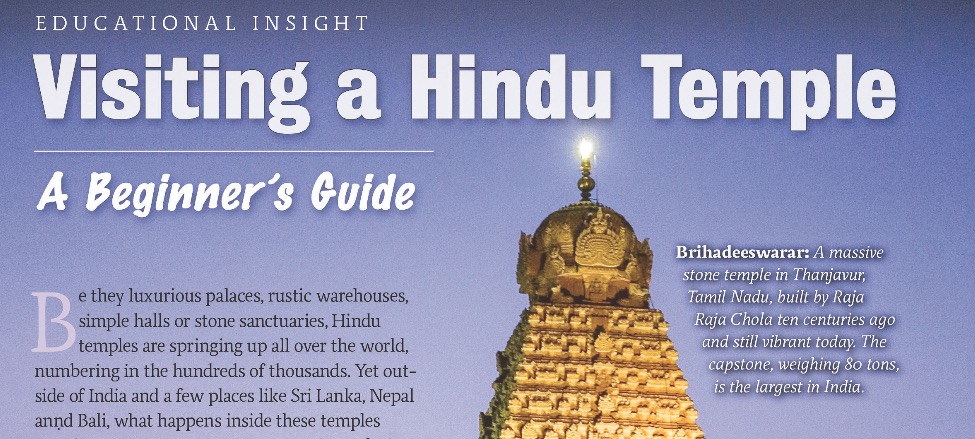EDUCATIONAL MATERIAL
ALL INSIGHT SECTIONS NOW ONLINE
HIMALAYAN ACADEMY IS HAPPY TO ANNOUNCE that our entire collection of Hinduism Today Educational Insight sections—a treasury 35 years in the making—is now available online. You can freely download any of our 54 (and counting) Insights from past issues of the magazine—in PDF, Mobi or ePub format—or simply read them online.
These articles provide a wealth of practical and perceptive information on a wide array of topics. Learn about the four great religions collectively called Hinduism, the fine art of meditation, the basic protocols for visiting a Hindu temple, the power of mantra yoga, the chakras, the nakshatras, the art of meditation, Indian history, ayurveda, the many nuances of a Hindu wedding, or explore a complex Agamic elucidation of the five powers of Siva. Each of these four to 20-page-long articles is carefully crafted with relevant (and elegant) photos, art and design, making the most complex topic easy to grasp. Teachers use them for classes and parents enjoy their simplicity and well-researched accuracy. These educational nuggets can inform children or anyone unfamiliar with our great heritage by printing them to be handed out at mandirs, classrooms, conferences or anywhere needing an better understanding of the Hindu religion. You can find a list of all our insight sections, with links to the text of each, here: bit.ly/allinsights [http://bit.ly/allinsights]
Years ago we created the book What Is Hinduism? as a compilation of 46 of these Insight sections. Recently an avid reader who has subscribed since 1990 told us that while others may use the Bhagavad Gita as their source of religious and spiritual insight, he uses What Is Hinduism? “It is my Gita.”
HIMALAYAN ACADEMY
Our publisher, Satguru Bodhinatha Veylanswami, wrote in his introduction to What Is Hinduism?: “All faiths are grappling with their self-definition as we rev up to the breathtaking speed of the information age—a period more intense and kinetic than any other in the history of the world. Teachings and practices that were once accepted without question are often now rejected unless evidence and logic are marshaled to give them plausibility. To survive, customs and traditions must bear up under intellectual scrutiny, must prove themselves helpful and immediately usable.
“Hinduism is no exception. Hindu education for youth is languishing, and communities around the world are struggling to compose clear, concise presentations of dharma. It would be possible to spend an entire lifetime, indeed, many lifetimes, absorbing and practicing the teachings of just one sect of the Hindu faith. Yet, there is a need to understand this complex conglomerate as a whole as well. There is a preeminent need, the world over, for cogent, comprehensive explanations of the various facets of Hinduism—and the shared features of its various sects—from a mountaintop perspective—to answer the sincere questions of children, coworkers, neighbors, critics and colleagues, and to provide a nonacademic presentation for those of other religions seeking insight into this ancient path.
“Producing quality educational materials on Hinduism is inherently difficult precisely because it is one of the world’s most paradoxical and easily misunderstood religious traditions. It can be equally confounding to the outsider and to those born in dharma’s embrace. This is because it is actually a family of many different faiths that share essential practices and characteristics.
“Today, Hinduism is going digital, working on its faults and bolstering its strengths. Leaders are stepping forth, parents are striving for ways to convey to their children the best of their faith to help them do better in school and live a fruitful life. Hindus of all denominations are banding together to protect, preserve and promote their diverse spiritual heritage.”
